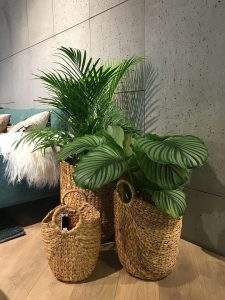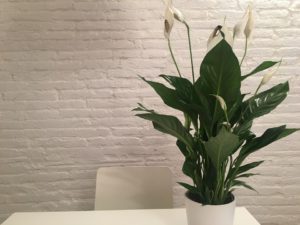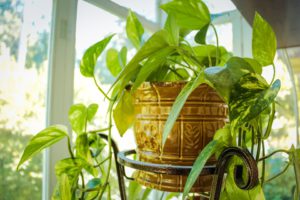8 Common House Plant Mistake To Avoid

It’s amazing how plants can bring such change to our environment, plants have many benefits including being grown for food. All of us depend on plants to help us in so many different ways even wildlife, and insects depend on plants for their survival. Plants play a major role on our planet, from our outdoor gardens to our indoor living spaces the presence of plants can make a huge difference.
Have you ever heard the statement” I don’t have a green thumb”, I have heard this said so many times especially when it comes to the care of indoor plants? You may have purchased an indoor plant or two from your garden center or it may have been given as a gift and for some reason, your plant just does not look the seem like the day you brought it home. It starts to deteriorate and sadly it eventually dies leaving you with many questions as to why my plant died after all the TLC (tender loving care) I gave it.
If this describes you then we are here to help you so whether you purchase that next plant or maybe a plant was given to you as a gift you will be knowledgeable about the growth and care of your houseplant. It’s not about having a “green thumb” which will look pretty strange but knowing how. Below we will be discussing 8 common houseplant mistakes to avoid.
1. Wrong Watering Methods
Number one on the list that is most common when caring for house plants are the wrong watering methods, I believe that a lack of knowledge when it comes to the right watering methods has done more damage and killed more indoor plants than the other listed indoor plant issues. Although a lack of water can be blamed overwatering is more common.
Get to know your plant’s watering needs and give them no more or less, a good source of information on your plant watering needs is your garden nurseryman who can tell you how and when to water. As a rule to go by however before applying water check the soil moisture by sticking your finger into the first top few inches of soil to get a feel of how moist or how dry your soil may be. What you can also do is use a soil probe or moisture meter that can be purchased from your plant nursery or garden center. Overwatering leads to root rot also, don’t allow your house plant to sit in water. Make sure and empty the saucer after watering your plant.
2. Insufficient Lighting
Insufficient lighting is another reason why indoor plants decline, if the leaves turn pale green with the younger leaves appearing smaller and the plant, in general, is not healthy looking can be that your indoor plant is not getting enough light. Placing your plant near a south or west-facing window or another part of the house that’s getting bright indirect light will help. What you don’t want is to expose your indoor plant to direct sunlight which can cause the leaves to burn along with having to water plants more frequently.

3. Exposure to Direct Heat
Exposing your indoor plants to direct heat such as radiators, ducts and other heating source will cause your indoor plant to lose water quickly ( dehydration). Try as much as possible to protect your indoor plants from heating systems.
4. Pests Issues
It’s important to inspect your indoor plants at least once or twice a week, inspect the leave’s surface as well as the underside along with the stems. If you ignore this, you may have a pest issue that may become a major problem, if you discover insects deal with them right away because insect pests can multiply quickly.
Insects to look for on indoor plants are aphids, mealybugs, spiders mites, and scales, the use of insecticidal soap, neem oil, or horticultural oil will bring control. Before applying insecticides read and follow the manufacturer’s directions for the best results. For proper identification of these indoor pests refer to Pest Control Methods.
5. Low Humidity
This is another cause for the decline of indoor plants, especially during the winter months when the heater comes on. Signs may include browning of the leaf tip followed by the entire leaf turning yellow. Yellow leaves can also be caused by insect pests, over or underwatering as well. Installing a humidifier will help in making the indoor air comfortable for your plants.
6. Plants becoming Root Bound

A plant gets root-bound when it outgrows its pot, which means that there are more roots with not enough soil because the root ball outgrows the pot size. The roots start to encircle the pot and then push or begin to grow upwards and out of the pot, when this happens the plant tends to dry out faster.
The only solution to this issue is to re-pot your house plant in a larger container, as a rule, the container should be a foot larger than the root ball. Add a quality potting mix and your house plant is all go0d to go.
7. Allowing Salt Buildup
The whitish crust on the soil’s surface or the sides of the pot is an indication that there is a build-up of salt, this happens because of insufficient water and can also be salts from fertilizers. When you water your indoor plant’s water to the point of runoff or until water runs from the drain holes helps to flush the soil of salt. A build-up of soil can negatively impact your indoor plant’s health.
8. Exposure to Drafts
Plants that are placed next to a door that opens frequently to the outside, too close to a window, or if the leaves are allowed to touch a window, especially during the winter months will cause indoor plant injury. Don’t expose your plants to these areas, if plants must be placed next to a window ensure that the leaves do not make contact with the window. The window should also be properly insulated.
The final word on Indoor house plant care
There you have it, it’s that simple you are now armed and dangerous or should I say better equipped to grow and care for your indoor plants. I believe that indoor plants have so much to offer such as beautification and purifying the indoor air that we breathe by pulling toxins out of the air. Now you know what to do, so begin to use this knowledge to ensure that your indoor plants are well taken care of so they can go to work for you.
About the author
Norman loves being in the garden, both at home and for his job....
he is 'Natures Little helper' being outdoors, growing his vegetables and flowers from an early age.
Now having spent over 22 years in the profession he want to give some of his knowledge to others...
his vast array of hints and tips you will find scattered over this site will help you no end growing plants in your garden.

Indoor plants are such a beautiful addition to an interior, but many people seem to struggle with caring for houseplants. So this is a great guide on why houseplants might not be happy or even die. Overwatering is often the most common cause of houseplants dying, with roots sitting in water and then drowning.
I have found the best way to water my houseplants is to put them in the kitchen sink and then put water in so that the roots can soak up the water from the bottom. I do it once a week and so far it seems to work very well with my houseplants. I will look out for build-up of salt, as I was not aware of it as a possible problem.
Hello, so good to see you, and thanks so much for stopping by, this guide on how to take care of houseplants is an easy step bt step guide to have success. I am so happy to help, wish you the best of success. Have a good day!